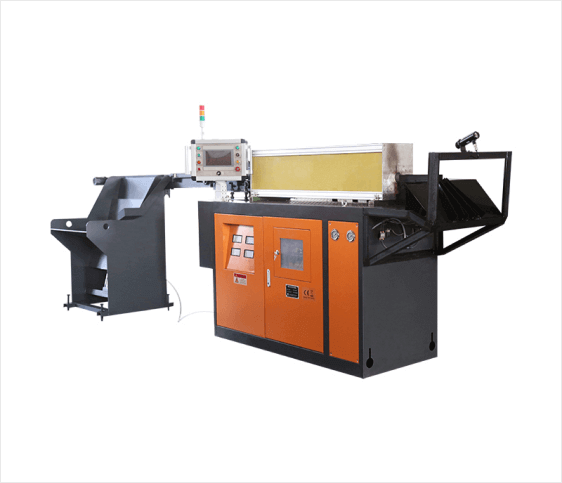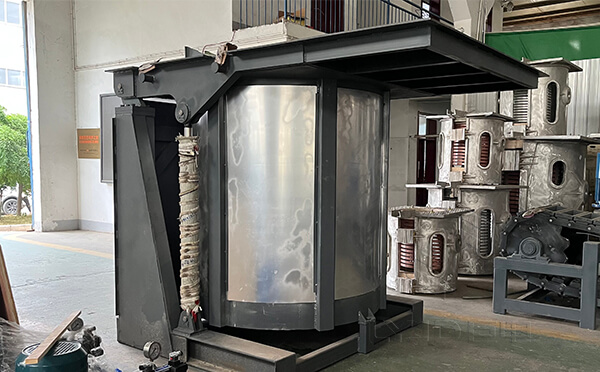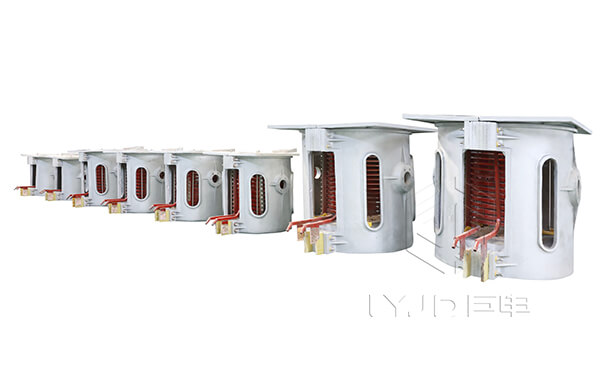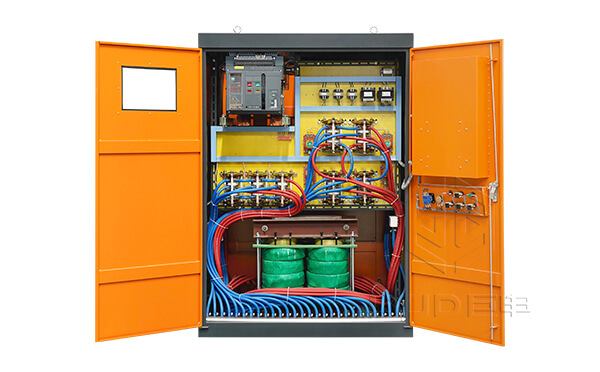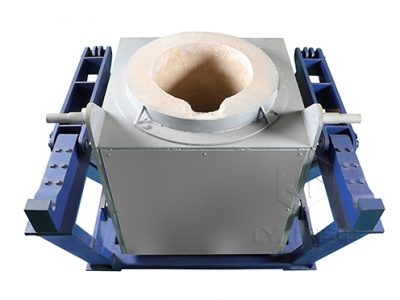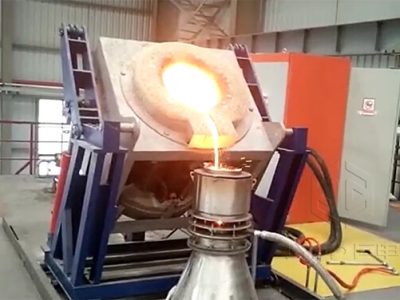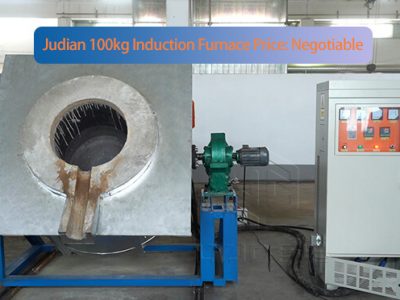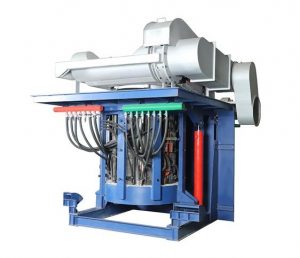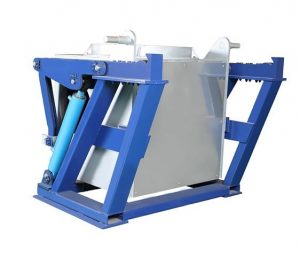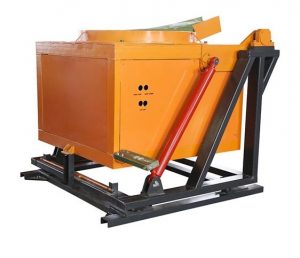The selection of induction melting furnace mainly considers raw materials and heating power, furnace capacity, power supply type, economic conditions and environmental factors. This article will introduce these aspects in turn to help you choose a suitable induction melting furnace.
What Is an Induction Melting Furnace?
Induction melting furnace is a kind of melting equipment that heats scrap steel and melts it into liquid steel through the principle of electromagnetic induction. It mainly consists of intermediate frequency power supply, capacitor cabinet, furnace body, mechanical tilting device or hydraulic tilting device, water distributor, crucible mold or graphite crucible, water-cooled cable, copper heating coil, etc.
Induction melting furnace is a key equipment in steel production and plays a core role in steel production. The principle of the melting furnace is mainly to melt the raw materials through heat energy, and the melted liquid steel can be cast or rolled as needed.
Advantages of Induction Melting Furnace
Fast heating speed: Since the induction heating process mainly relies on electromagnetic induction and heat transfer, the material can be heated to the expected depth and temperature in a short time.
Less heat loss and higher heating efficiency: During the induction heating process, energy is transferred in the form of electromagnetic waves, which is less affected by the outside world and has less energy diffusion, which improves the heating efficiency.
Less pollution: The heating energy is mainly electric energy. Harmful gases and other pollutants will not be produced during the heating process. It is a new type of clean energy.
Simple and reliable operation: The induction melting furnace is computer controlled, with a high degree of automation, simple and convenient operation, and high reliability.
Good processing quality: Due to the fast heating speed, the molten steel stays in the crucible for a short time, which reduces defects such as oxidation and air absorption of the molten steel and improves the casting quality.
Low temperature and less smoke and dust around the furnace: Due to the electromagnetic induction heating method, high temperature and smoke will not be generated, and the working environment is relatively clean.
Meltable Materials
Induction melting furnaces can be used to melt a variety of scrap metal materials. The heating power required to melt different raw materials will also vary greatly.
Scrap steel and scrap iron: Induction melting furnaces can melt all kinds of scrap steel and scrap iron. These materials can be reused after melting to produce new steel products.
Scrap non-ferrous metals: Induction melting furnaces can also melt various scrap non-ferrous metals, such as scrap copper, scrap aluminum, scrap zinc, etc. These materials can be reprocessed after melting to produce new non-ferrous metal products.
Special metal scrap: The induction melting furnace can also melt some special metal scrap, such as tungsten, molybdenum, tantalum, niobium, etc. These materials can be used to make high-precision parts and specialty materials when melted.
| Raw Materials |
Heating Power (kW) |
| Scrap steel |
1,500 – 2,000 |
| Scrap non-ferrous metals (aluminum, copper, zinc, etc.) |
500 – 1,000 |
| Special metal scrap (tungsten, molybdenum, tantalum, niobium) |
2,500 – 4,000 |
It should be noted that the heating power required for an induction melting furnace is not only related to the type of raw materials, but also depends on the capacity of the furnace. All you need to do is determine the type of raw material to be melted and the quantity to be melted per unit time.
Induction Melting Furnace Capacity
The selection of medium frequency steel melting furnace capacity requires comprehensive consideration of multiple factors, including melting efficiency, casting capacity and investment economics.
First, melting efficiency needs to be considered. Melting efficiency refers to the ability to melt how much metal can be melted per unit time. When selecting the capacity of an intermediate frequency steel melting furnace, the need for melting efficiency needs to be considered to ensure that the equipment can meet production needs.
Secondly, casting capacity needs to be considered. Casting capacity plays a decisive role in the capacity of the melting furnace. For example, if your factory's casting capacity is 10 tons/hour, then you can choose to use three 4-ton induction melting furnaces or two 5-ton induction melting furnaces. This can meet production needs without causing excess melting capacity.
Finally, the economics of investment need to be considered. The larger the capacity of the intermediate frequency melting furnace, the higher the price. When selecting capacity, it is necessary to comprehensively consider the investment cost and operating cost of the equipment to choose the most economical solution.
Power Type Configuration
Selecting the appropriate power supply type for a medium frequency steel melting furnace requires consideration of the following aspects.
Efficiency of the power supply: The higher the efficiency of the power supply, the higher the efficiency of converting electrical energy into heat energy, which can reduce energy consumption and equipment operating costs. Therefore, when choosing a power supply, you need to choose a power supply with higher efficiency.
Reliability of power supply: The medium frequency steel melting furnace requires continuous power supply during operation, so a power supply with higher reliability needs to be selected to ensure the stable operation of the equipment. Generally speaking, digital power supplies have higher reliability because their control systems are more advanced and can avoid power failure.
Price of power supply: Different types and specifications of power supply have different prices. While the efficiency and reliability of the power supply need to be considered, the price of the power supply also needs to be considered to avoid unnecessary costs.
Repair and maintenance of power supply: The difficulty of repair and maintenance of different types and specifications of power supply is also different. The cost and convenience of equipment repair and maintenance need to be taken into consideration.
Economic Conditions
We have mentioned above that the larger the capacity of the induction melting furnace, the higher the price; the larger the heating power, the higher the cost. Therefore, when selecting an induction melting furnace, the relationship between economic input and benefit output must be taken into consideration.
Environmental Factor
Since many scrap metal materials will produce a large amount of harmful gases and substances during the melting process, they will cause a certain degree of environmental pollution. Therefore, the impact on the environment should also be considered when purchasing an induction melting furnace.
Summarize
To sum up, when purchasing an induction melting furnace, you must comprehensively consider its heating power, capacity, adapted power supply, environmental factors and economic conditions.
